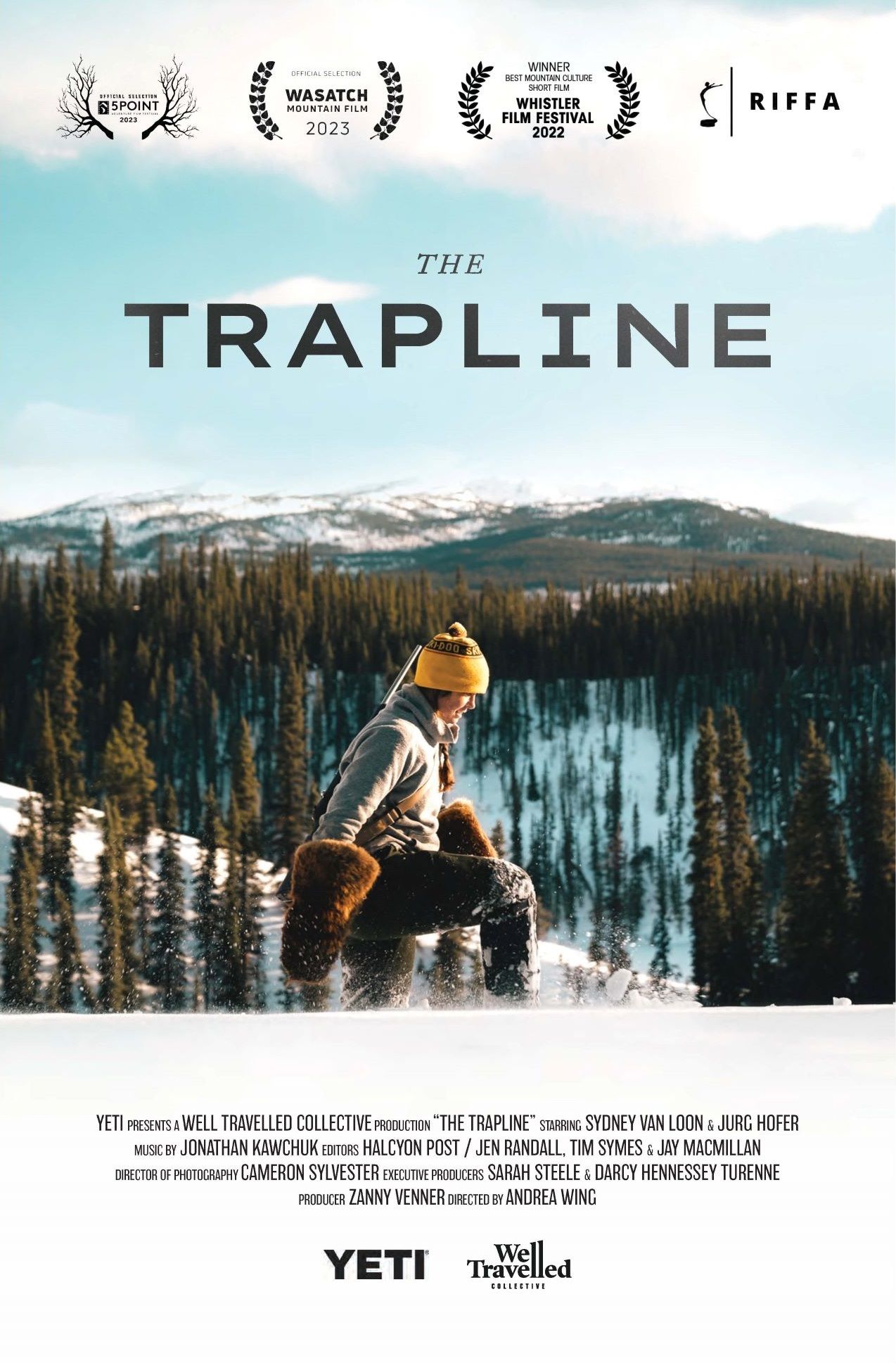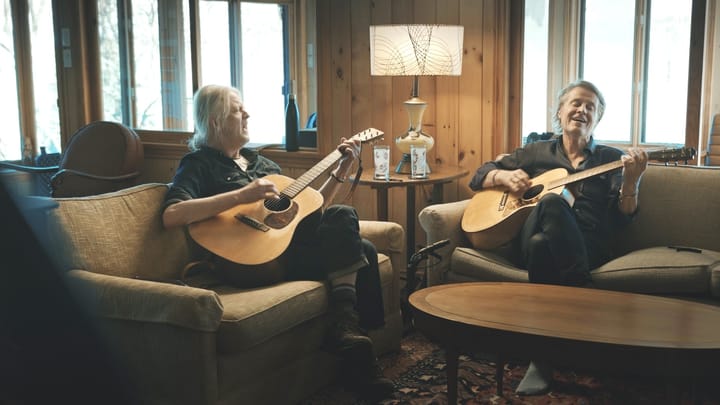A young woman purchases a Yukon trapline in hopes of finding success as a trapper in The Trapline. We talk with filmmaker Andrea Wing about documenting a dying tradition in one of Canada’s coldest regions.
The Trapline shares the real-life story of Sydney Van Loon, a young woman who purchases a Yukon fur trapline from Jurg Hofer, a veteran trapper heading into retirement.
The documentary explores Van Loon’s quest to carve out an existence in Canada’s harsh winter climate and to establish herself in the traditionally male-dominated world of hunting and trapping. Along the way, the film also shines a light on a rapidly disappearing – and increasingly controversial – way of life.
Director Andrea Wing says the opportunity to “bring a northern story further south” has been “an amazing journey” – one that kicked off a few years back when Wing and Van Loon met through mutual friends.
“I’ve always been intrigued by Syd. She’s just a strong, independent female and I think a lot of women are just sort of in awe of her abilities,” Wing says. “She lives such a different life, one that is so uncommon and unconventional in a lot of ways. As a filmmaker, that was really appealing. We just wanted to show how she navigates the world that she’s in.”
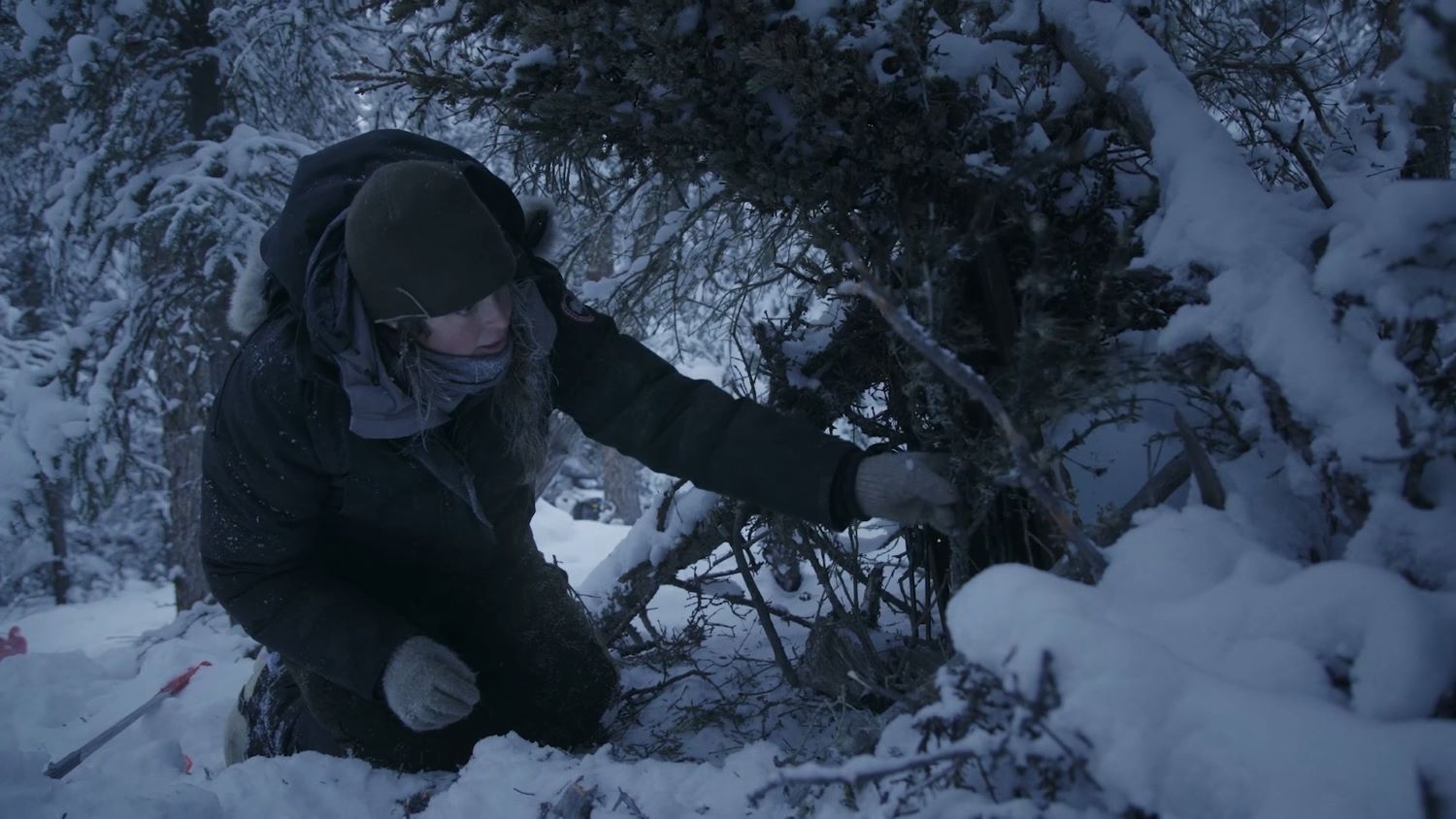
Wing describes Van Loon as “a unique human” and says her confidence and success as a trapper made her an ideal subject for the director’s Well Travelled Collective, the production company Wing co-founded with a focus on telling outdoor stories and supporting under-represented creatives.
“Those first moments on day one of the shoot when Syd was like, ‘Alright, let’s hit the trapline,’ and we all jumped on snowmobiles and we were following her down this trail, I was just like, ‘Oh my God,’” Wing recalls. “Being that close to nature and these animals was really impactful. It gave me a huge appreciation for the world that Syd lives in and how challenging the environment is and the skill that it takes to do what she does.”
The film also explores the unusual apprenticeship between Hofer and Van Loon and the wisdom the “old-timer” passes on to his younger protege. As Wing recalls, it wasn’t easy getting the septuagenarian trapper on board with the project.
“Access to your characters is so critical. If you want to make a documentary, it’s worth putting in the energy to make that happen.”
“Jurg was a hard no at the beginning. He’s seventy-five and was not interested in being on camera. We really put a lot of time into developing a relationship with him, getting him to trust us and learn about us as filmmakers and humans,” she says. “In the end, he came around and he agreed to participate. Access to your characters is so critical. If you want to make a documentary, it’s worth putting in the energy to make that happen.”
Shooting through wintertime in the Canadian subarctic also posed a number of major technical and survival challenges for the film’s production team. However, as Wing explains, the experience also created some valuable learning opportunities.
“We learned so much about gear and what temperatures it freezes up at. Does a drone work at minus-40? No, not really. Also, if you fall in a beaver pond at minus-40, which happened to our camera operator, it’s really serious,” she says. “We also learned that you can survive at minus-40 if you’re prepared and you have the right layers and you take care of yourself. That was amazing.”
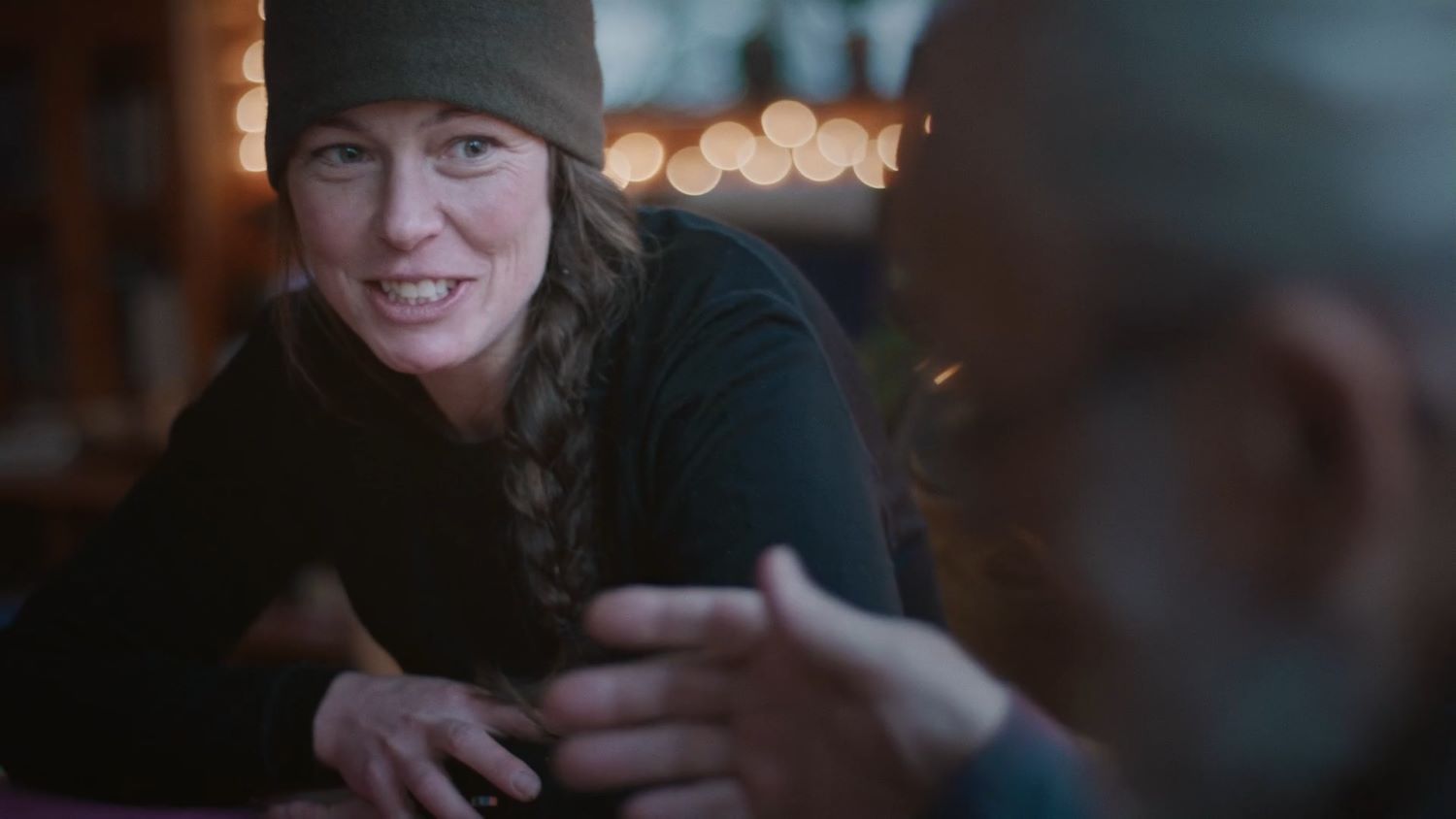
On a personal note, Wing says that making the film was a fascinating opportunity to learn more about the fur industry and the role it has played in the country’s history and development.
“When the industry was thriving in the early days of what we call Canada, it was a huge trade and a huge part of funding the push to go west,” she says. “There are lots of people still out there trapping. However, I’m not sure how many still rely on this profession as full-time income, as the market and demand for fur has changed. Jurg trapped full-time in the winter in his day using teams of trusted dogs to run his line. To quote Jurg, ‘That was real freedom being on the line.’”
At the same time, she acknowledges that the film might not sit well with everyone, especially when it presents a humanistic portrait of people who are often depicted as “cold-hearted killers.”
“It’s even hard on Syd. Every time she does it, she sort of steps away for five minutes and lets the animal’s soul leave its body. I don’t think it gets any easier.”
“Fur as a big topic is quite polarizing. Syd says she’s tried every mitt on the market and the only thing that has worked for her and has kept her warm at minus-40 or minus-50 are the beaver mitts that she wears in the film. It’s a matter of function up there,” Wing says. “There are a lot of people that criticize fur, but maybe they’re also contributing to the fast fashion industry. Is that any better? I don’t know.”
Regardless, Wings says it is important for audiences to see for themselves what a typical day of “being on the line” is like, as well as the level of responsibility that comes with taking from land sustainably for the future.
“We came across numerous [trapped] wolverines and lynx. It was very challenging in a lot of ways. Syd had to dispatch the animals, to end their life, and that was really hard to watch,” she says. “It’s even hard on Syd. Every time she does it, she sort of steps away for five minutes and lets the animal’s soul leave its body. I don’t think it gets any easier.”
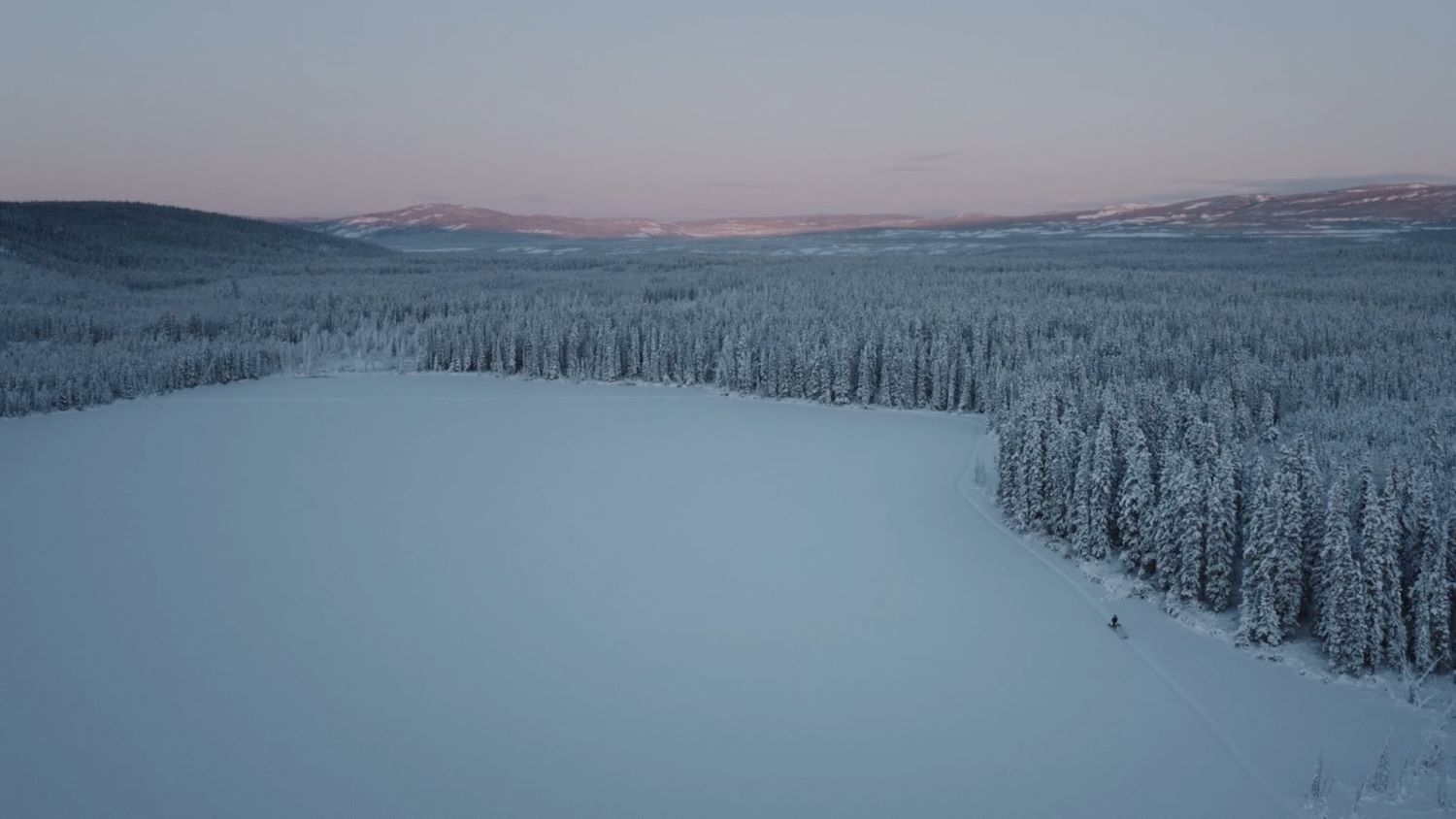
The Trapline is currently making tracks around the festival circuit, where it has already brought home a number of best short accolades. Although Wing admits it has been nice seeing the film accepted by audiences, she adds that there are also things that are “better than awards.”
“We did the first screening in Whitehorse at the museum up there and had about 200 people and it was a really fun night,” she says. “There were two girls that were eight and ten years old who came and they went home and told their mom that Syd was their hero – hearing that was pretty cool. If we can influence the younger generation to see the beauty of living life outside, that’s pretty amazing.”
Ultimately, Wing says that being able to tell an authentic story from Canada’s north has left her wanting to make more documentaries like The Trapline, and that she hopes the film will leave others wanting to pursue life on their own terms.
“I hope people are inspired by someone who has found something that they want to die doing and by seeing somebody that’s so dedicated to living the life that they want,” she says. “Syd has worked hard to get this trapline and to carve out a life that really rings true for her. She’s independent and strong and capable and she’s just a great example of doing it your own way and not following societal demands or expectations.”
Learn more about The Trapline and other projects from the Well Travelled Collective here. Connect with Andrea Wing on Instagram here (@andrea_wing) or via her website here.
